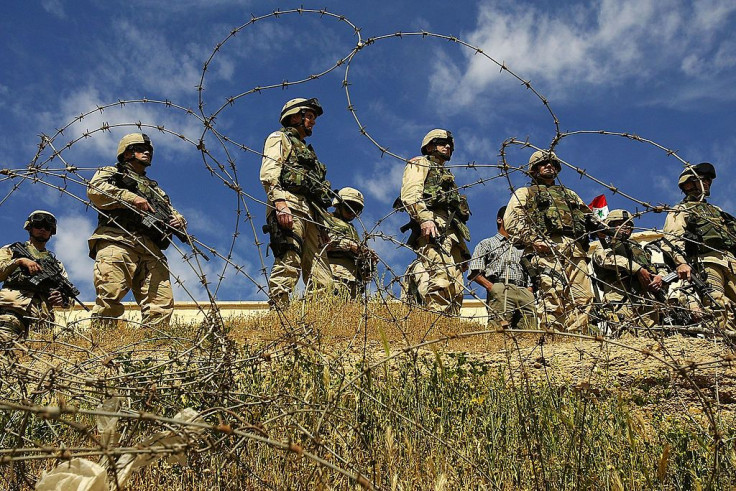US Reviews Plan To Deploy 120,000 Troops To Middle East If Iran Strikes

President Donald Trump reacted to widespread media reports his administration has drawn-up plans to deploy 120,000 American troops to the Middle East by calling the reports fake news, but said he’d send “a hell of a lot more troops than that” if they were true.
The New York Times broke the news of the planned troop deployment, which was later confirmed by multiple media outlets. It wrote that acting defense secretary Patrick Shanahan presented the plan during a meeting of top national security officials last week.
The meeting included Gen. Joseph Dunford, chairman of the Joint Chiefs of Staff, CIA director Gina Haspel, Director of National Intelligence Dan Coats and national security adviser John Bolton.
It was convened days after the Trump administration claimed Iranian forces and its proxies plan to attack U.S. forces in Syria, Iraq and at sea. The administration cited "specific and credible" intelligence for this assessment. Media reports later on identified the source as Israeli intelligence.
Shanahan’s plan might send as many as 120,000 U.S. troops to the Middle East if Iran attacks American forces already in the region, or accelerates its development of nuclear weapons. It’s not known where in the Middle East these U.S. troops will be based.
The military plan allegedly does not envision a land invasion of Iran. It was ordered and pushed by Bolton, long an advocate of regime change in Iran, and one of the architects of the U.S. invasion of Iraq in 2003.
The number of the troops proposed by Shanahan "shocked some who have been briefed on them." One of those present at the meeting said the figure is close to the number of U.S. troops that invaded Iraq in 2003.
Trump was briefed on the plan, said the Times citing knowledgeable administration sources. However, on Tuesday, Trump denied the multiple news reports.
"Now would I do that? Absolutely. But we have not planned for that," he said. "Hopefully, we're not gonna have to plan for that, and if we did that, we'd send a hell of a lot more troops than that."
Some military analysts pointed out the U.S. invaded Iraq with some 165,000 troops only to realize this number was woefully inadequate to accomplish its mission. Iran is three times the size of Iraq.
Some senior administration officials said that while the plan is in its early stages, it shows "how dangerous the threat from Iran has become.”
Other administration officials “are urging a diplomatic resolution to the current tensions.” They noted the plan amounts to a scare tactic to warn Iran against new aggressions.
Iranian Supreme Leader Ayatollah Ali Khamenei on Tuesday responded to news about the U.S. plans, saying Iran does not seek war with the United States but “has chosen the path of resistance.”
In his speech on Iranian state TV, Khamenei also said Iran won’t negotiate the Joint Comprehensive Plan of Action (JCPOA), or the Iran nuclear deal. He also emphasized war is not an option for Iran.
“There won’t be any war. The Iranian nation has chosen the path of resistance,” said Khamenei. “We don’t seek a war, and they don’t either. They know it’s not in their interests.”

The Trump administration last week deployed a carrier strike group to the Middle East in light of troubling “indications and warnings” from Iran. The move is meant to show the United States will retaliate with “unrelenting force” to any attack. A ranking administration official, however, said the U.S. is not expecting an imminent Iranian attack.
© Copyright IBTimes 2025. All rights reserved.





















